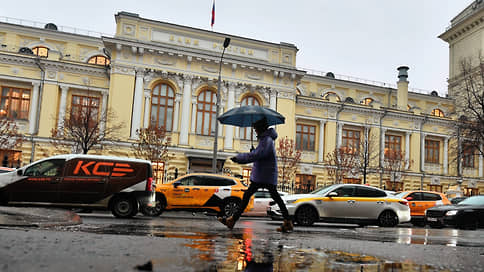The Central Bank will reduce foreign exchange injections by almost 12 times
[ad_1]

The volume of net sales of foreign currency on the domestic market by the Central Bank will be equal to the equivalent of 600 million rubles. In March it was about 7 billion rubles. This is due to a twofold increase in daily purchases by the Ministry of Finance. In April, the department will allocate 11 billion rubles each for the purchase of foreign currency and gold. in a day. The Bank of Russia will mirror these operations.
How will the ruble exchange rate react? In the second half of April, we should expect a weakening of the national currency, says BCS World of Investments expert Evgeniy Mironyuk: “For the ruble, this is, of course, a negative factor, but it should not be overestimated. Lower foreign currency and gold sales are offset by expectations of higher inflows of foreign money from exports.
The ruble in the short term in the second ten days of April after these changes come into force may approach the level of 93 rubles. for a dollar. And in the medium term, remain in the range of 90-95 rubles, that is, the upper limit of the range with the dollar may expand. Of course, we don’t forget about the volatility of oil prices; they may still decline.”
The Central Bank does not spend reserves to maintain the ruble exchange rate, said the head of the Bank of Russia, Elvira Nabiullina, at the end of March. She clarified that the regulator last carried out foreign exchange interventions from reserves in February 2022, when there were risks to financial stability. Now, according to Nabiullina, there are none. Problems with calculations will have a greater impact on the exchange rate, says economist Sergei Khestanov: “Formally, the reason for the reduction is the budget rule. Theoretically, provided that all other factors are stable, this reduction should not have any significant impact on the ruble exchange rate.
In practice, when this happens, the sensitivity of the ruble exchange rate to all external factors increases noticeably. Fluctuations in export earnings and demand for foreign currency will greatly affect the ruble exchange rate. The process of adaptation to the threat of secondary sanctions has already had a noticeable impact on the flow of foreign exchange earnings. The dynamics of the ruble exchange rate will be determined by how effectively it will be possible to find some new ways for the movement of payments; it may be necessary to somewhat lengthen the chain of intermediaries.”
The Ministry of Finance returned to purchases of foreign currency and gold in February 2024. In January, the department sold foreign currency due to a lack of additional oil and gas revenues.
Everything is clear with us – Telegram channel “Kommersant FM”.
[ad_2]
Source link






